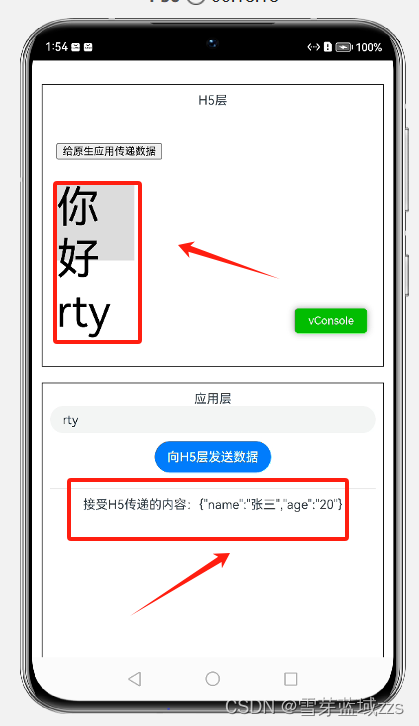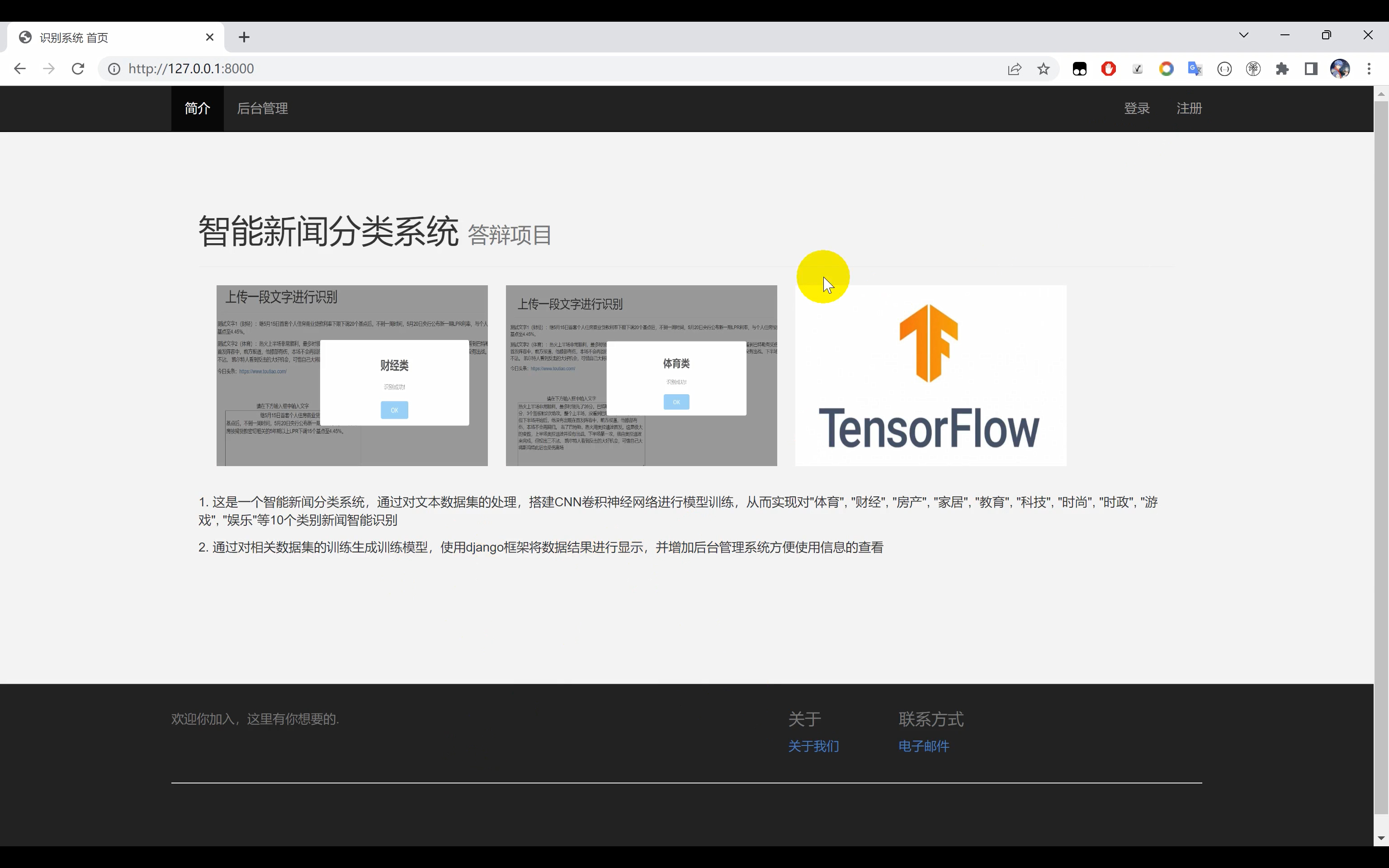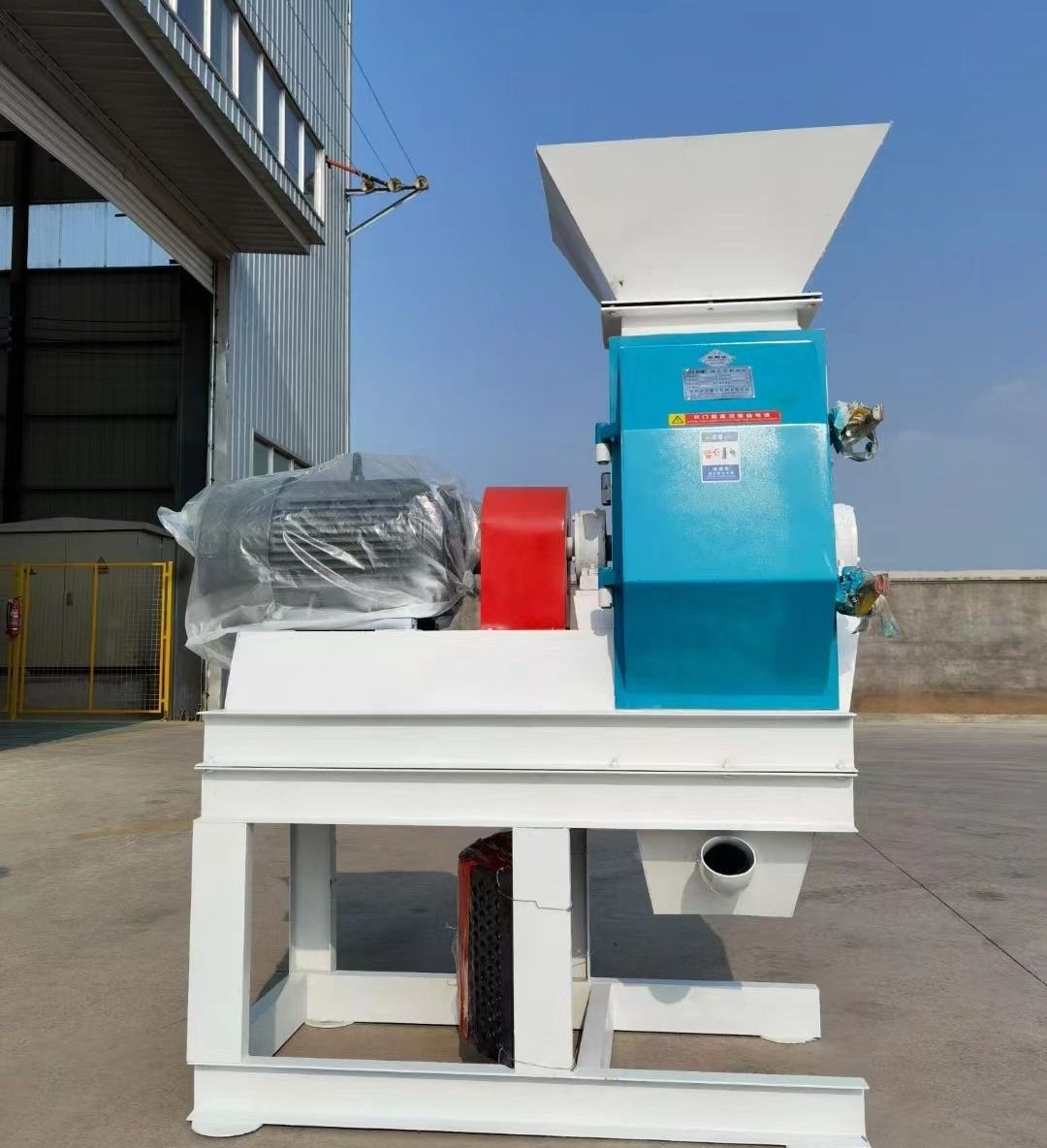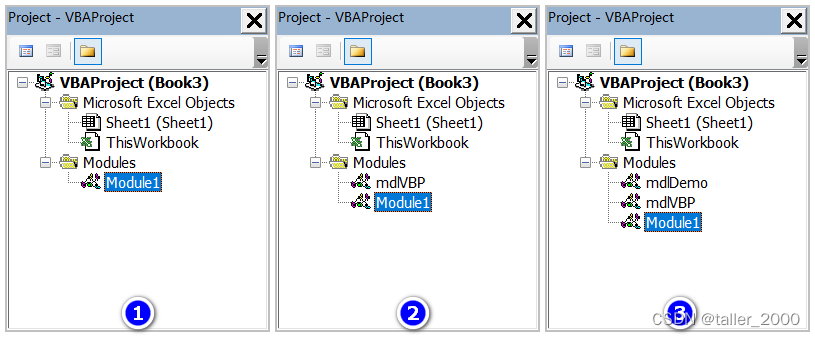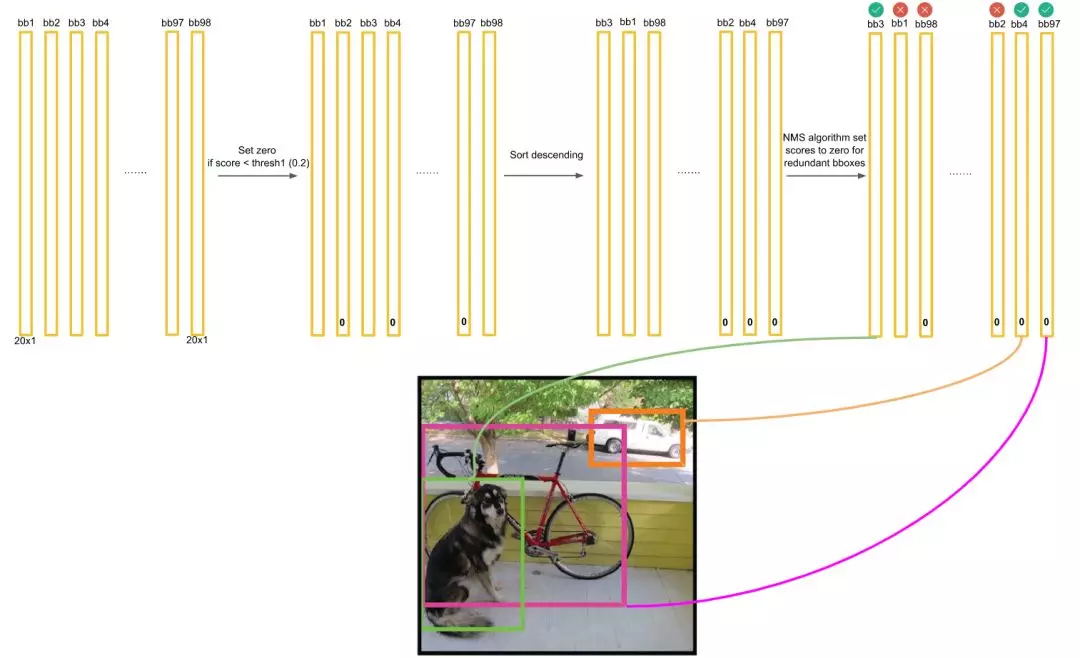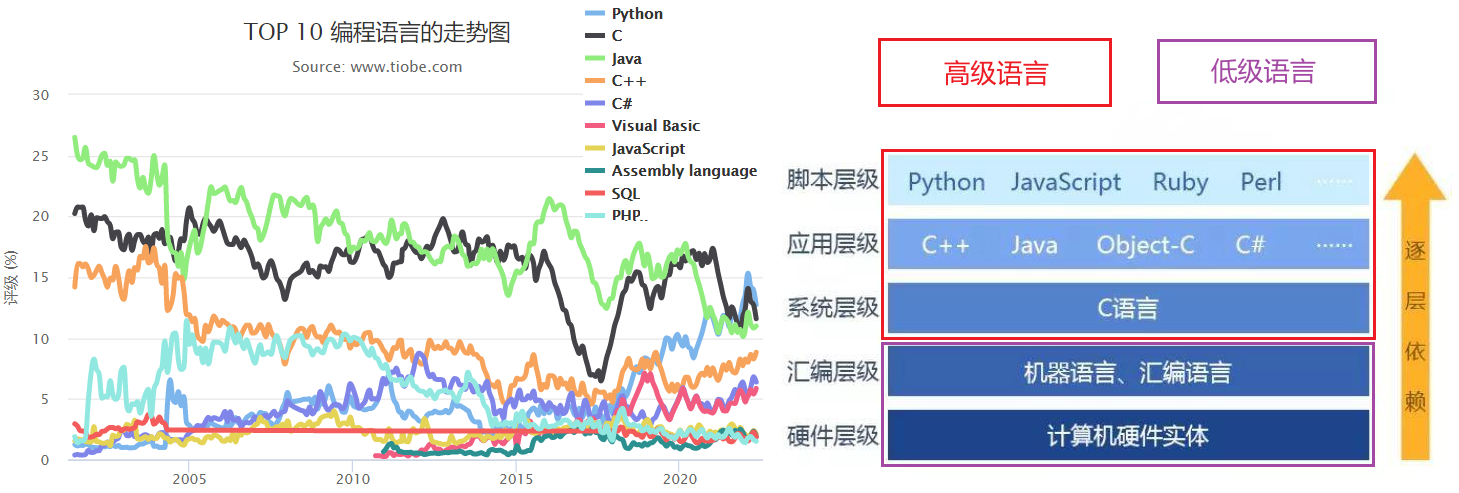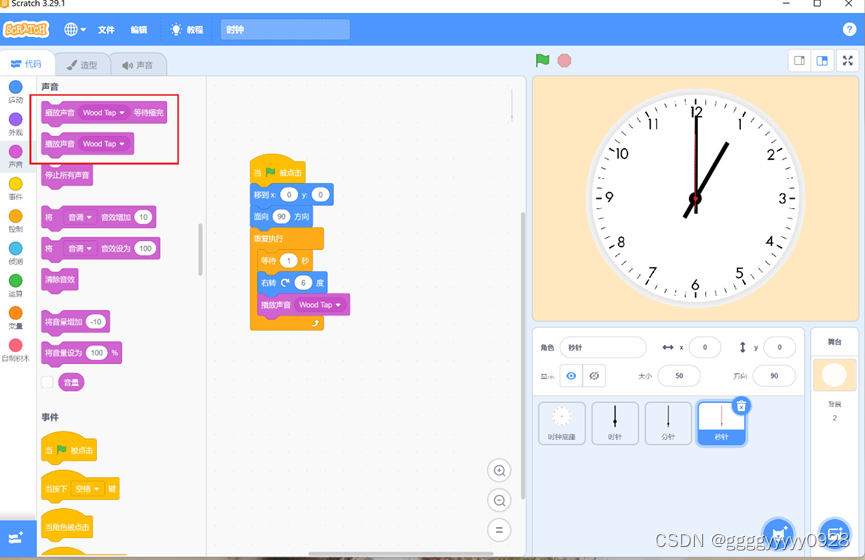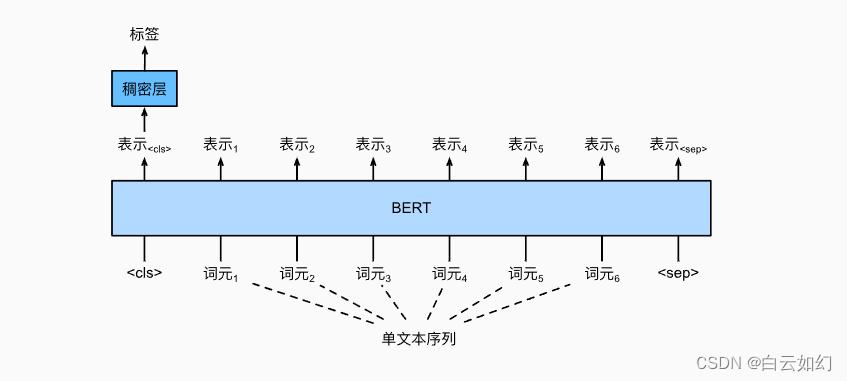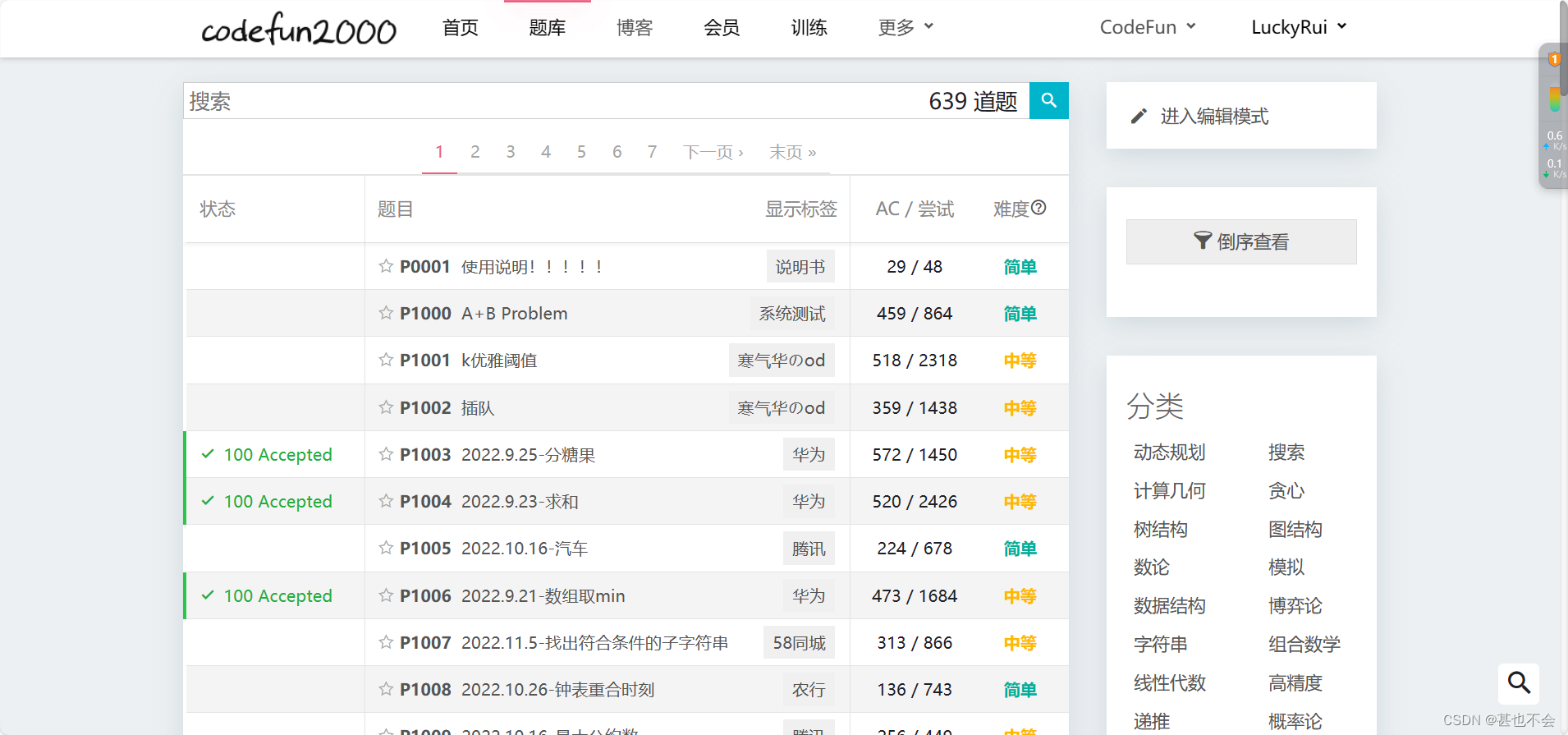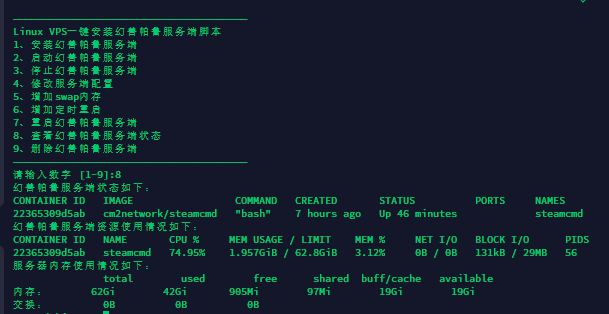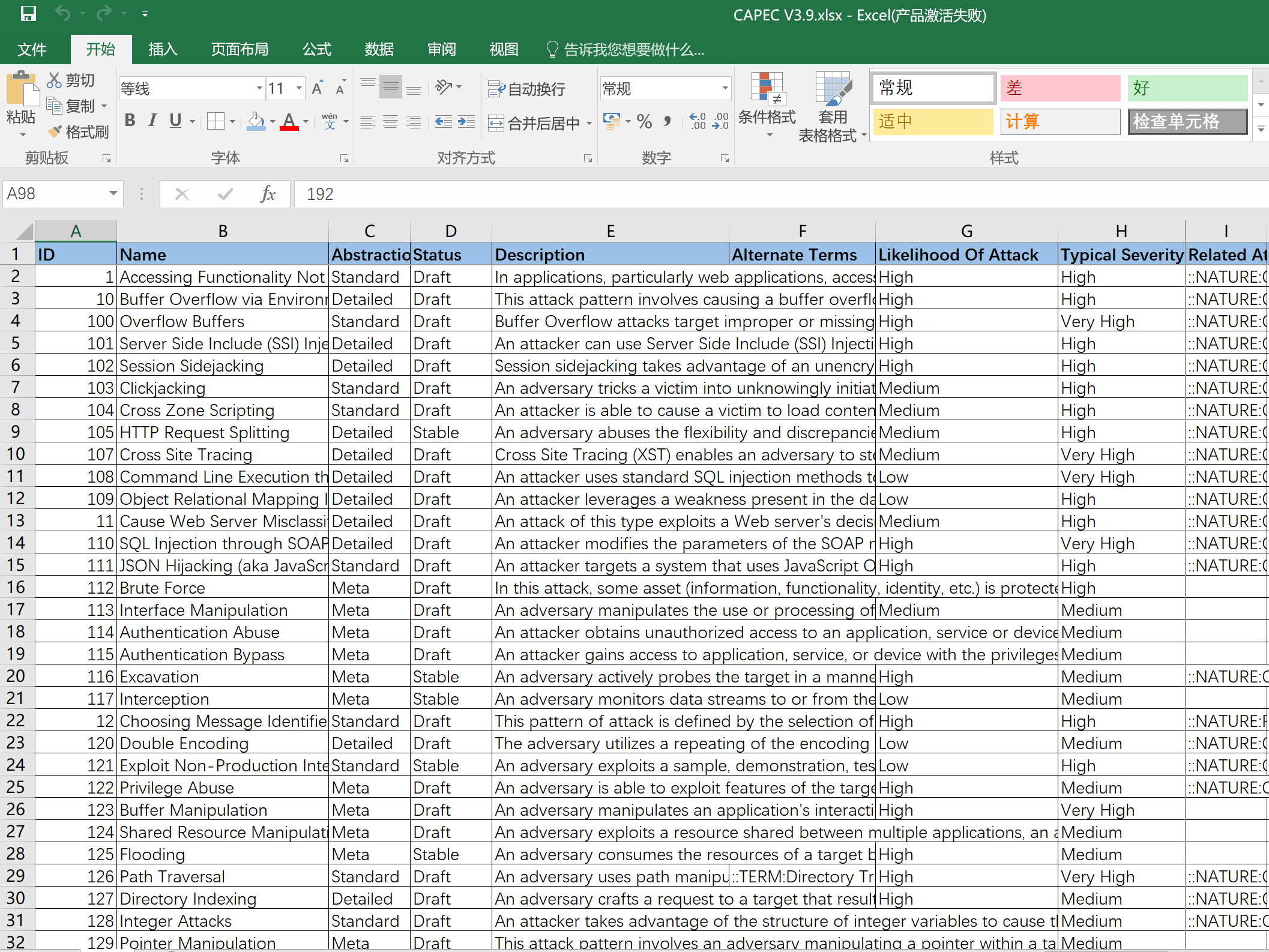函数对象
- 函数对象概念
- 谓词
- 概念
- 内建函数对象
- 算术仿函数
- 关系仿函数
- 逻辑仿函数(基本用不到)
函数对象概念
重载函数调用操作符的类,其对象常称为函数对象,函数对象使用重载的()时。行为类似函数调用,也叫仿函数。
函数对象(仿函数)是一个类,不是一个函数。
使用特点:
函数对象在使用时,可以像普通函数那样调用,可以有参数,可以有返回值。函数对象超出普通函数的概念,函数对象可以有自己的状态,函数对象可以作为参数传递。
//函数对象在使用时,可以像普通函数那样调用,可以有参数,可以有返回值。
class myAdd {
public:
int operator()(int a, int b) {
return a + b;
}
};
//函数对象超出普通函数的概念,函数对象可以有自己的状态
class B {
public:
int count;//内部自己的状态
B(){
count = 0;
}
void operator()(string s) {
cout << s << endl;
this->count++;
}
};
//函数对象可以作为参数传递
void doP(B& b1, string b2) {
b1(b2);
}
void test() {
myAdd ma;
cout << ma(10, 10) << endl;
B b2;
b2("dasfafasfg");
b2("dasfafasfg");
b2("dasfafasfg");
b2("dasfafasfg");
cout << "次数:" << b2.count << endl;
B b3;
doP(b3, "C++");
}
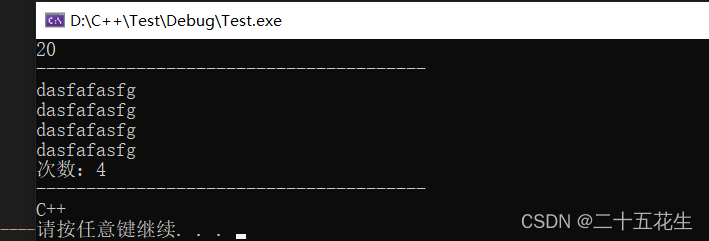
谓词
概念
返回bool类型的仿函数称为谓词,如果operator()接受一个参数,叫做一元谓词;如果operator()接受两个参数,叫做二元谓词。
一元谓词:
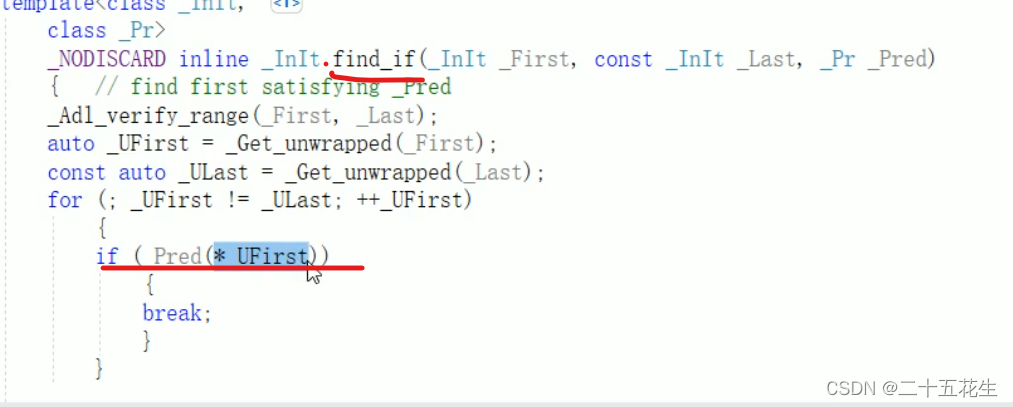
class CreateN {
public:
bool operator()(int val) {
return val > 5;
}
};
void test() {
vector<int> v;
for (int i = 0;i < 5;i++) {
v.push_back(i);
}
//查找容器中有没有大于5的数字,CreateN()匿名函数对象
vector<int>::iterator it=find_if(v.begin(), v.end(), CreateN());
if (it == v.end()) {
cout << "没找到" << endl;
}
else {
cout << "找到" << endl;
}
}
二元谓词
class myCom {
public:
bool operator()(int v, int v1) {
return v > v1;
}
};
void test() {
vector<int> v;
v.push_back(10);
v.push_back(24);
v.push_back(12);
v.push_back(35);
v.push_back(20);
sort(v.begin(),v.end());
for (vector<int>::iterator it = v.begin();it != v.end();it++) {
cout << *it << endl;
}
cout << "---------------------" << endl;
//使用函数对象改变算法规则,从大到小
sort(v.begin(), v.end(),myCom());
for (vector<int>::iterator it = v.begin();it != v.end();it++) {
cout << *it << endl;
}
}
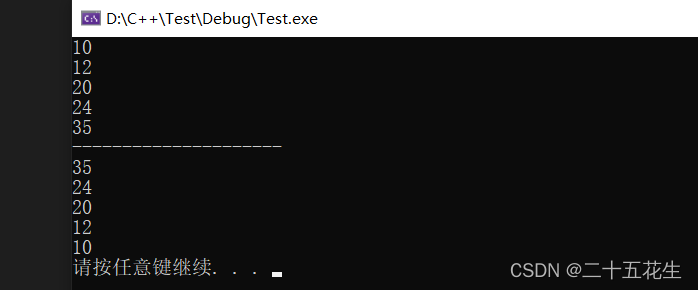
内建函数对象
STL内建了一些函数对象,有算术仿函数、关系仿函数、逻辑仿函数,这些仿函数所产生的对象,用法和一般函数完全相同,使用内建函数对象,需要引入头文件**#include**
算术仿函数
实现四则运算,其中negate是一元运算,其他都是二元运算。
仿函数原型
1、template<class T> T plus < T >加法仿函数
2、template<class T> T minus < T >减法仿函数
3、template<class T> T multiplies < T >乘法仿函数
4、template<class T> T divides < T >除法仿函数
5、template<class T> T modulus < T >取模仿函数
6、template<class T> T negate < T >取反仿函数
void test() {
//取反仿函数(一元用法)
negate<int> n;
cout << n(50) << endl;
//加法仿函数(二元用法)
plus<int> p;
cout << p(10, 34) << endl;
}
关系仿函数
实现关系对比
仿函数原型
1、template<class T> T bool equal_to< T >等于
2、template<class T> T bool not_equal_to< T >不等于
3、template<class T> T bool greater< T >大于(最常用)
4、template<class T> T bool greater_equal< T >大于等于
5、template<class T> T bool less< T >小于
6、template<class T> T bool less_equal< T >小于等于
void test() {
...
for (vector<int>::iterator it = v.begin();it != v.end();it++) {
cout << *it << " ";
}
cout << endl;
//降序 greater<int>()内建函数对象,和自己实现的仿函数效果一样
sort(v.begin(), v.end(), greater<int>());
}
逻辑仿函数(基本用不到)
1、template<class T> T bool logical_and< T >逻辑与
2、template<class T> T bool logical_or< T >逻辑或
3、template<class T> T bool logical_not< T >逻辑非
void test() {
....
cout << endl;
cout << "-----------------------------------------" << endl;
//利用逻辑非,将容器v搬运到容器v1中,并执行取反操作
vector<bool>v1;
v1.resize(v.size());
transform(v.begin(), v.end(), v1.begin(),logical_not<bool>());//搬运,必须要开辟不骗空间才可使用
for (vector<bool>::iterator it = v1.begin();it != v1.end();it++) {
cout << *it << " ";
}
}

